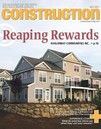Wake Up & Smell The Coffee!
 Sometimes the difference between success or failure is simply having the wisdom to seek an outside opinion. The one thing that you can’t provide, yourself, is an objective point of view. No matter how smart you are, your viewpoint will always be subjective.
Sometimes the difference between success or failure is simply having the wisdom to seek an outside opinion. The one thing that you can’t provide, yourself, is an objective point of view. No matter how smart you are, your viewpoint will always be subjective.
In business, not having this impartial, third-party perspective, on occasion, can lead to failure. Failure doesn’t have to mean closing your doors; failure could be missing an important business opportunity, or, perhaps, the opportunity of a lifetime.
Thirty years ago, if you asked a person what brand came to mind when you said the word ‘coffee,’ he or she would have replied either Folgers or Maxwell House, the two brands that dominated the coffee market. Today, if you asked the same question, it’s more likely, than not, that the answer would be Starbucks.
Starbucks revolutionized coffee consumption in the U.S., because of one man—Howard Schultz, the current chairman and CEO of Starbucks. In the early 1980’s, Schultz was working for a housewares company in New York, when he noticed that a small whole bean coffee company in Seattle, which sold just bags of coffee and had four stores, was ordering more plastic cone filters than anyone else. He flew out to Seattle to investigate and he was so impressed that he became the marketing director for Starbucks.
While on a trip to Milan for an international housewares show, Schultz had observed how there was an espresso bar on every street. The idea for Starbucks, as we know it today, was born—from the synergy of an outside perspective brought into the business by a supplier and the exposure of how specialty coffees were sold from outside the United States (in Italy).
The owners of Starbucks, however, didn’t want to change their business model from selling whole bean coffee as they believed that coffee is something that people only brewed at home. Schultz had to start his own company in order to develop his idea. In 1987, he purchased Starbucks from the original owners and transformed not only that business, but the entire coffee market.
This specialty coffee market has, since, turned into a multi-billion industry.
Now, let’s step back to the 1980’s, when the national coffee market was dominated by Maxwell House and Folgers, both of which were owned by large multi-national corporations. Maxwell House was owned by Kraft, which is part of Phillip Morris, and Folgers was owned by Procter & Gamble.
The executives running Maxwell House and Folgers were very intelligent people. They controlled the coffee industry for decades. They built their brands into the most popular coffee products sold in supermarkets around the country. They were at the top of their industry. Certainly, they knew their business, their products, their customers and how to grow their product. Or, did they?
How did these executives, at the top of the coffee business, miss the biggest change in the coffee industry in several generations? How did a housewares executive outsmart the barons of the brewed beverage industry with a formula to quadruple the price of a cup of coffee, revolutionize the industry, and then take a 32% share of the specialty coffee market segment, while building a company with $14.9 billion in revenue in 2013 with over 3 BILLION customer visits?
While the bean counters at Maxwell House and Folgers were focused on holding down costs, with lower quality Robusta beans for supermarket coffee shoppers, European consumers were enjoying the higher-priced Arabica beans for their espressos and cappuccinos. Schultz recognized that there was a huge untapped market for a better cup of coffee, made from better beans.
Starbucks began a slow, but steady process to raise consumer expectations by buying only the best beans and then charging a premium for each ‘cup of joe’ that they brewed. More importantly, the premium price was purposely calculated to be more than just marginally higher to cover the cost of the high quality beans required for a superior cup of coffee; it was designed to hit their bottom line like a double shot of espresso. And, it did!
How could the top executives at Maxwell House and Folgers miss the most colossal change in the coffee business in a generation? How did they miss the market for premium coffees for NEARLY THREE DECADES?
Folgers has only recently entered the whole bean coffee market with its own premium brand of Folgers whole bean coffees—Folgers Gourmet Selections. Why did it take them, literally, decades? How could they ignore this market opportunity, while others slurped up a huge market share?
What Schultz brought to the coffee business was an objective, third-party point of view.
Even though Schultz joined the Seattle company as a marketing executive, he was just like an analyst coming into a company, offering its original owners an objective point of view on how to expand their business, which they could not see on their own. They saw themselves as selling whole bean coffee; Shultz saw something bigger. And, when owners didn’t ‘get it,’ he moved on to start what would become the powerhouse coffee brand that it is today.
His outside point of view ended up showing the entire coffee industry how it could be morphed into a more profitable business than just selling the beans.
Sadly, the original owners were not open to new ideas. They were unable to embrace the objective, third party point of view that Schultz brought to the company. They failed to see it; failed to be open minded, and failed to benefit. They continued on the same path, while Schultz carved a new path. They missed the opportunity Schultz gave them.
It is rare for someone to knock on your door to offer an entirely new understanding of one’s business. When it happens, however, it can be magic. That is what we offer our clients: the opportunity to have someone come in from the outside, to provide not only an objective, third-party point of view, but some magic, as well.
The risk may not necessarily be outright failure, but that you could miss the opportunity of a lifetime. An impartial outside perspective maximizes a business owner’s chances for finding that golden nugget of an idea to move the business forward.
Can you imagine how much money the original owners of Starbucks lost because they failed to embrace the recommendations made by Howard Schultz? It’s more than enough to give them a massive Iced Caramel Macchiato brain freeze!







